Crisis Communication Response Project
Overview
The Crisis Communication Response Project (CCRP) was a 1.4 million dollar grant from the Department of Defense to research how social media can be effectively used in crisis situations. The project was led by Alton Miller. My role in the team was to act as Technology Lead and Developer – a consultant, researcher, and the primary developer of a social media platform prototype.
Within our three month timeframe we researched, designed, and developed a functional prototype of a system to allow civil defense volunteers to function more effectively and efficiently in a crisis. This citizen network would include a spectrum from those who just installed the application to a trusted cadre trained in the use of social media for emergency management; each level of participation opens new opportunities and new responsibilities. The system was designed to work on both small format (i.e., mobile smartphone and tablet) and on desktop computers.
The design of the application was shared among the team. Alton Miller, Associate Dean of the School of Media Arts, Dr. Connie White, author of Social Media, Crisis Communication, and Emergency Management: Leveraging Web 2.0 Technologies, Anne Marie Mitchell, corporate communications executive and crisis communications manager, and myself all gave unique perspectives that enriched the conceptual design.
Some of the ideas I proposed include allowing other existing applications to pass data into our system (acting as plug-ins or extensions), having immediate value on installation (anonymous users get something out of the application), techniques to make 311 smarter, and rewards for participation. The City of Chicago’s initiative towards a more open and transparent government provided the public with rich data sets. Our platform leverages the abundance of existing applications using that data (such as Sweep Around Us , Chicago Street Cleaning and Was My Car Towed , and Dude, Where’s My Car ). By designing from the ground up to allow other applications to plug-in to our system, we decrease the amount of redundancy and encourage the existing users of those applications to try our platform.
Another design aspect proposed a method to reduce the amount of duplicate 311 reports submitted to the city; instead of submitting a new report that is the same as one already submitted, the system instead encourages supporting what has already been reported. This is similar to the ‘Like’ function in Facebook, and the ‘+1’ function in Google +; it gives social credit to the person who originally submitted the report and gives citizens rewards for participating in civic improvement and strengthening the social media community.
Web Prototype
The web prototype is functional and demos several features including:
- database stores information and preferences
- current information pulled from the City of Chicago's site
- adaptive information based on login and preferences
The prototype demos functionality not visual design.
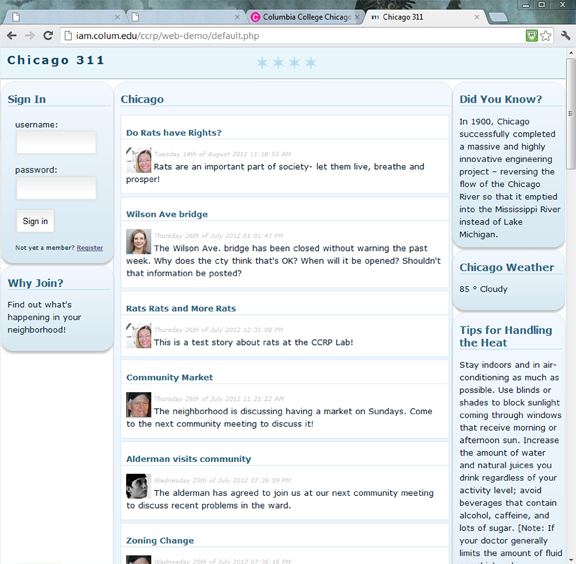
Anonymous login still provides value: city-wide information and updates.
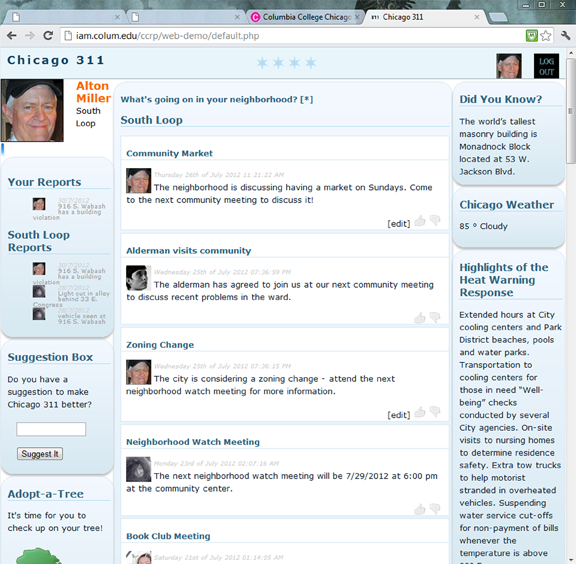
Registering and adding your neighborhood allows you to get location-specific information.
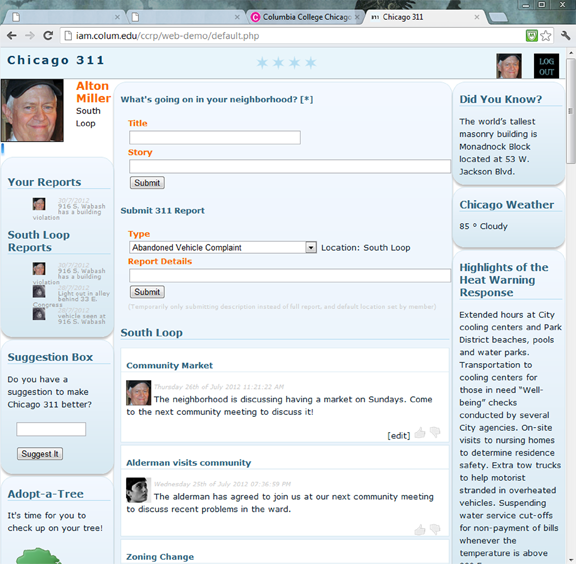
Registered users can submit information about what is happening in their neighborhoods, or submit 311 reports that can be tracked. They also have access to other reports that have been submitted in their neighborhood.
Smartphone and Tablet Mockups
Some of the mobile mockups created show how more of the conceptualized features could work. These mockups were part of a presentation given to the City of Chicago's Office of Emergency Management and Communications. These mockups demo functionality, not visual design.
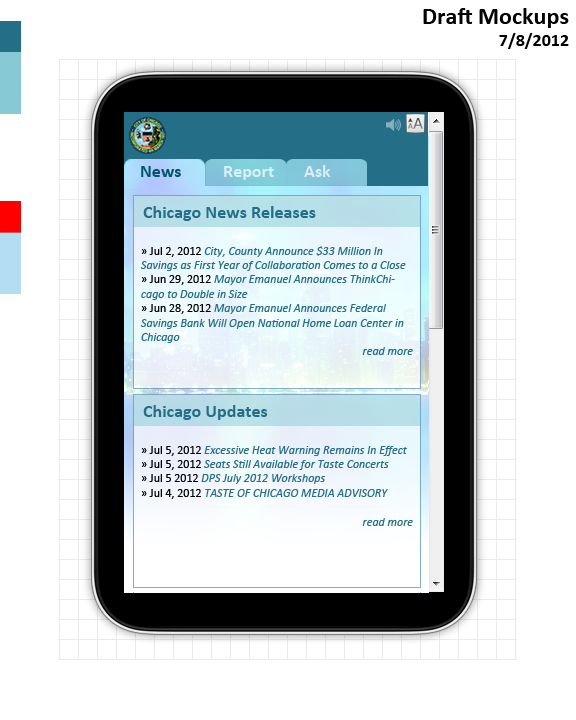
Anonymous login still provides value: city-wide information and updates.
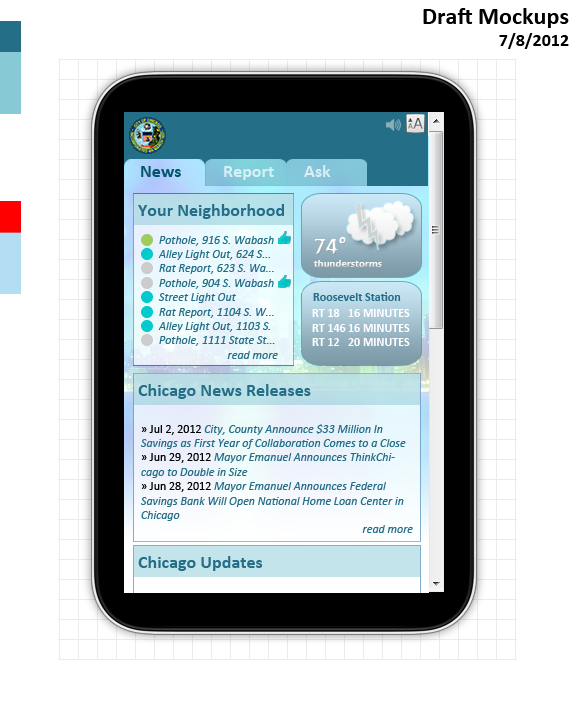
Registering and adding your neighborhood allows you to get location-specific information.
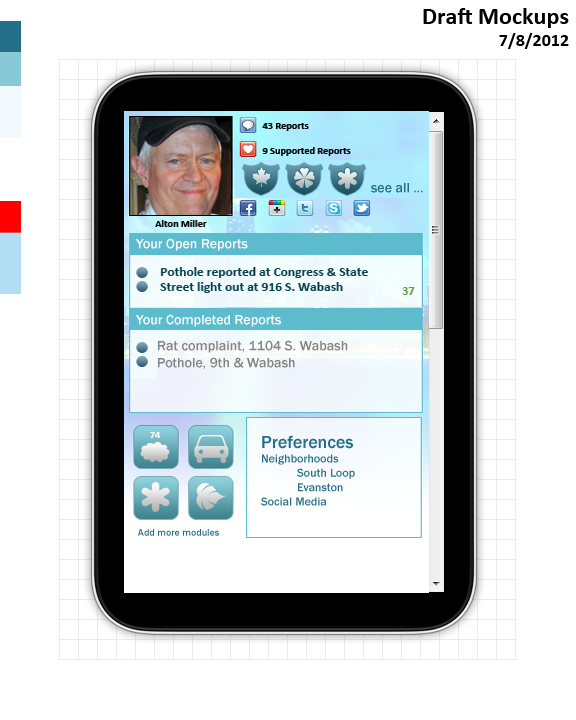
Registered users can track 311 reports, manage preferences, and add more modules to extend functionality.
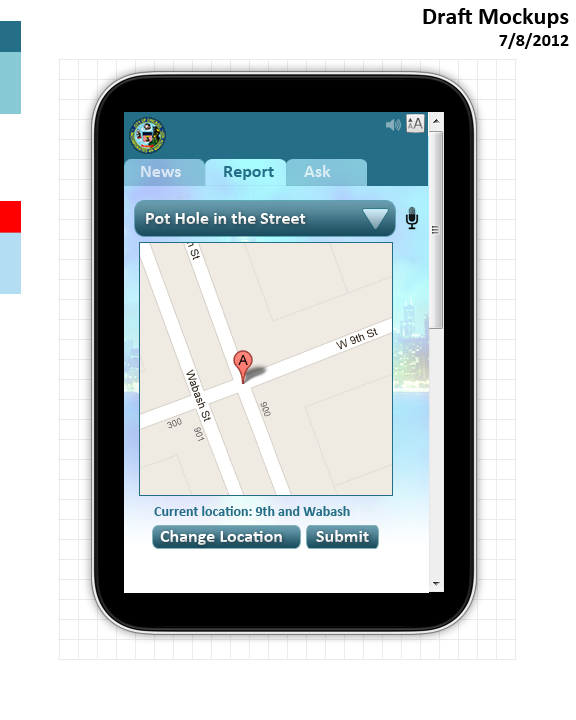
GPS allows 311 reports to be submitted using maps.
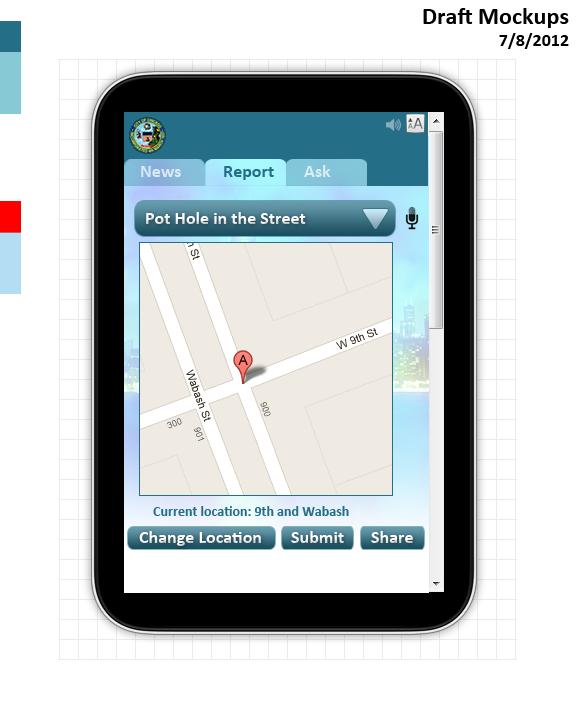
If social media services have been connected, a share option will publish a link so you can ask friends and neighbors to support your report.

Social media options are added in preferences, then are available through the share option.
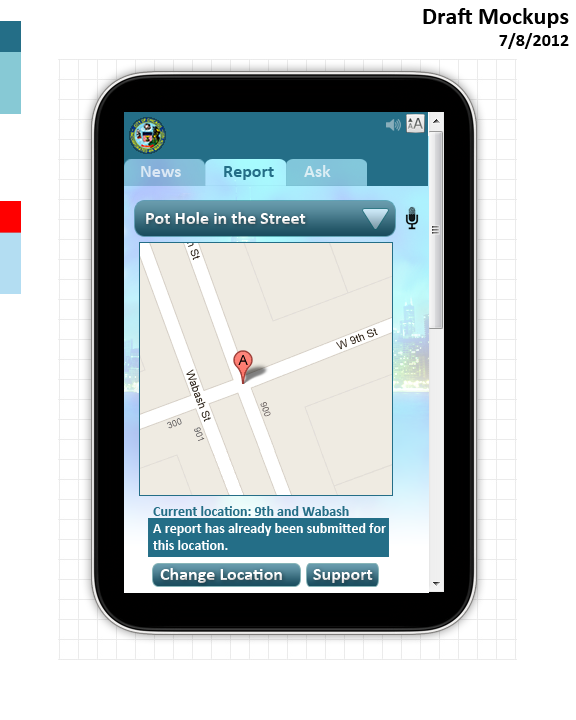
The smart system knows if a report has already been submitted at a location - instead, the system will ask you to support the existing report.
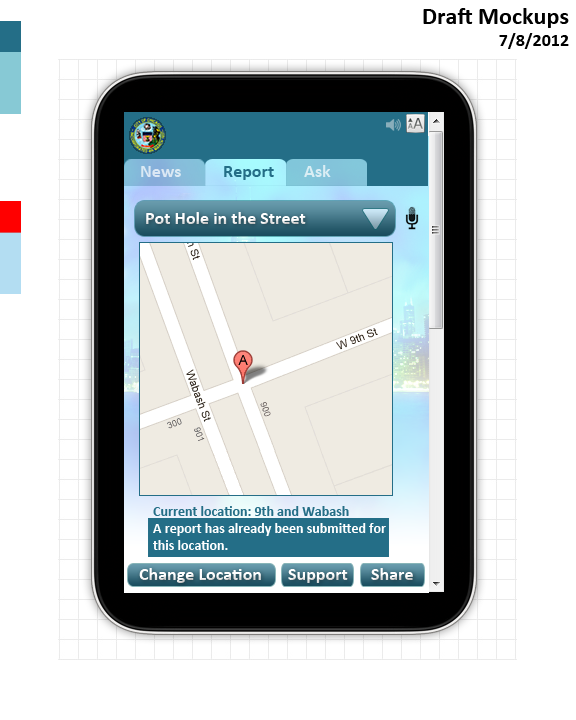
Sharing allows you to ask others to support a report that has already been submitted.
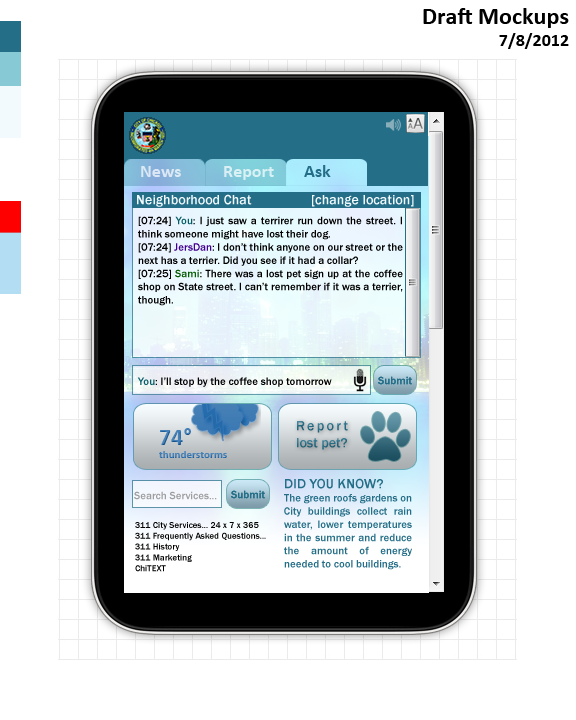
The smart system shows options relevant to information being submitted: if information entered is related to a potential lost pet, a "Report lost pet" option appears on the screen.